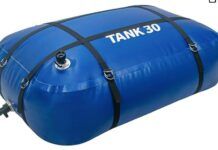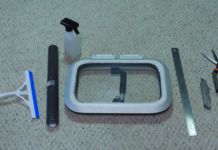Stainless Fasteners Seized in Aluminum
Every summer on my boat in the Mediterranean I come across the problem of trying to remove a stainless steel screw or other part which is hopelessly corroded.
My question is: Are you aware of any solvent or method to loosen corroded stainless steel/aluminum connections? All other sailors I have asked could not help either.
Herbert Schroeter
S/Y Dionis
via e-mail
There is no guaranteed way of getting seized stainless steel fasteners out of aluminum, but there are some tricks that may help.
If a fastener resists you, start by applying a lubricant like Corrosion Block or WD40 around the screw head. Let it sit for awhile. Tap the screw head lightly with a hammer. Try again. If still seized, apply more lubricant, and tap again. One of our fathers-in- law, a machinist, can get just about any screw out without breaking off the head, but hell sometimes take a week to do it!
If this fails (or your patience!), you can try an impact wrench, but be careful not to snap off the screw head. As strong as stainless seems, this is possible even using just hand pressure.
Next, you can apply heat from a propane torch, but be careful not to discolor or otherwise damage the aluminum.
When we rerigged Vivas mast, we broke a number of screws (not enough patience). Then we had no choice but to drill a pilot hole into the broken stem of the screw and then twist in a screw extractor. This is tedious and you have to watch out for the drill slipping off the screw stem and into the softer aluminum. A nail punch gives the drill bit a place to start.
When replacing new fasteners, always use a good anti-seize compound like Duralac, or if youre worried about it backing out, a product like Loctite will keep it from unthreading.
Fiberglass Diesel Tank
Im replacing a fuel tank in an Irwin 41 ketch as one of the tanks under the cabin sole has rotted out. Rather than remove this tank we have deactivated it and have decided to put a 100-gallon tank in the bottom of a large stern locker. The locker is so deep that the bottom of it is inaccessible, unless you climb into the locker, so we are not losing any storage space.
The boat yard has proposed that we create the new fuel tank out of fiberglass. By using the hull of the boat we could simply enclose the bottom third of the locker and create the fuel tank. I remember reading that Nigel Calder had glassed-in tanks built in his new Crealock, but don’t remember if they were water tanks or fuel tanks.
Can you think of any particular reason that this glassed-in approach is not advisable? The questions that cross my mind are: Will the diesel fuel be absorbed into the glass of the hull causing damage to the fiberglass? Will the glass deteriorate and foul the fuel? Do you know of any boats that use fiberglass fuel tankage similar to what we are considering? Id appreciate your thoughts.
George Simpson
East Bridgewater, Massachusetts
Fiberglass tanks are okay for diesel. Its probably not a bad idea to have them epoxy coated. In his book, Boatowners Mechanical and Electrical Manual, Calder says only to make the exposed layers resin rich mat. There should be no contamination problem with the fuel. If the tank is large (and yours is), be sure baffles are installed, and try to incorporate a sump to collect sediment, and a separate pickup tube through which you can pump out the sediment. In rough weather, a major cause of engine failure is sediment that is dispersed up and around the tank from the sump, clogging filters and injectors.




































